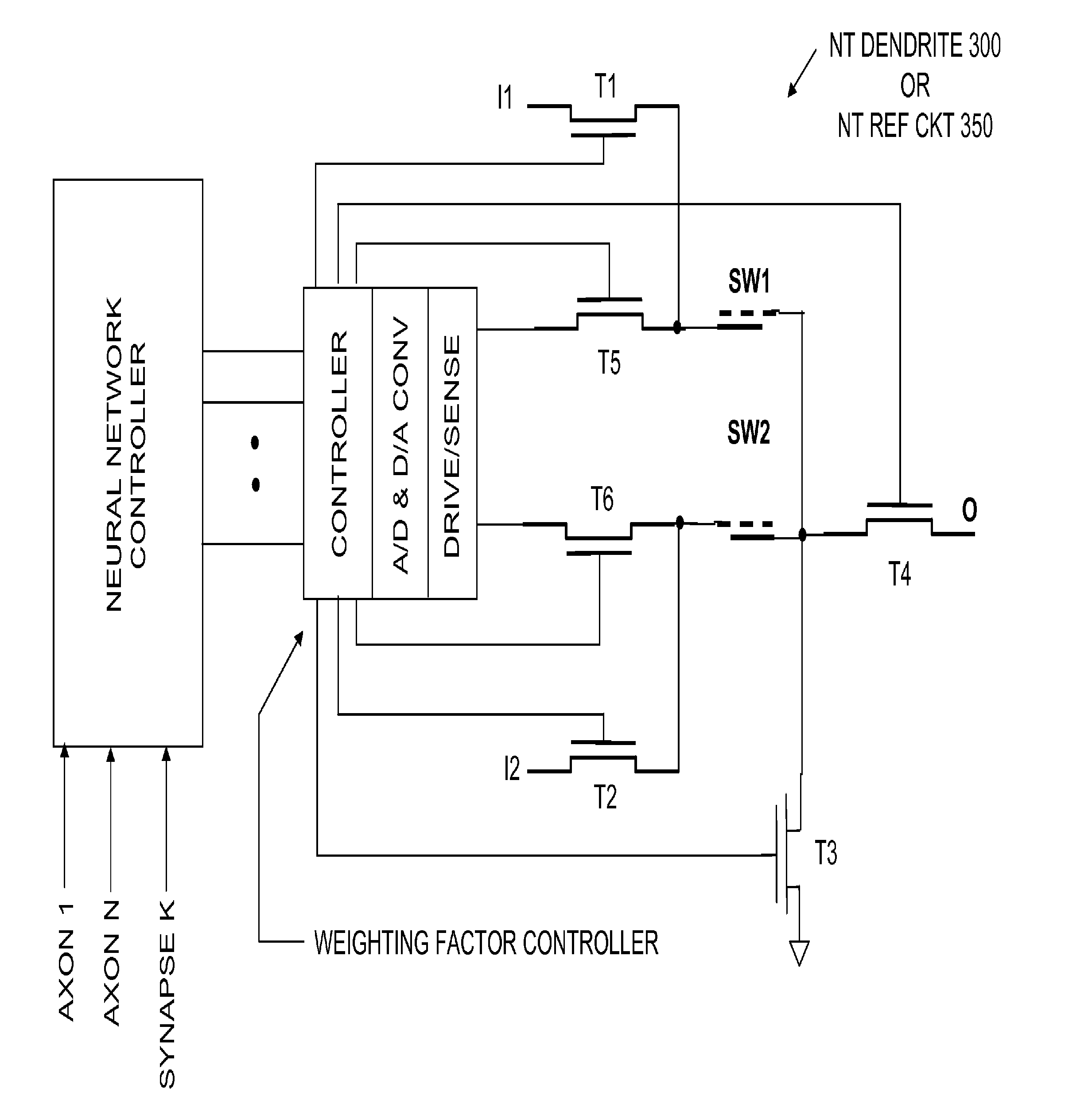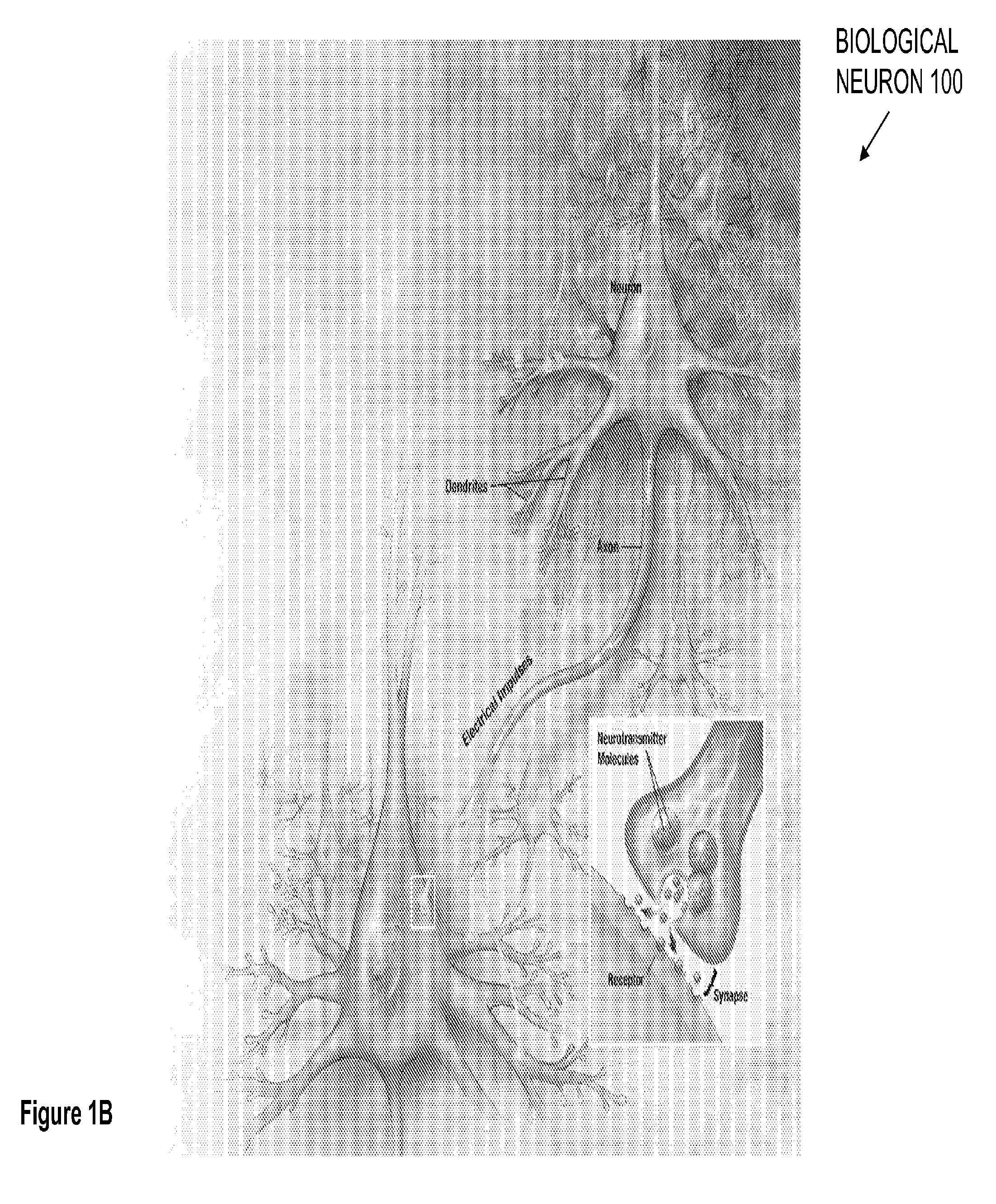Carbon nanotube-based neural networks and methods of making and using same
a carbon nanotube and neural network technology, applied in the field of carbon nanotube switches and methods of making same, can solve the problems of electronics approaching quantum-mechanical boundaries, wiring complexity increasing, and fet complexity increasing
- Summary
- Abstract
- Description
- Claims
- Application Information
AI Technical Summary
Benefits of technology
Problems solved by technology
Method used
Image
Examples
Embodiment Construction
[0033]Nonvolatile nanotube switches enable new electronic implementations based on nanotube neural networks. One solution to the complexity and performance limitations of traditional electronic devices is the use of carbon nanotubes to fashion agile information processing circuits in analogy with biological neural networks. Nanotube-based circuit and network functions exhibit some of the desirable characteristics found in biological neural networks. For NT Neural Networks, these characteristics include:[0034]3D interconnections[0035]High device density[0036]Low power with nonvolatile nanotube switches[0037]Low noise because of relatively slow operation[0038]High fan-in compatibility via NT dendrite trees and high fan-out capability via NT axons[0039]Lowered cost, since there is no immediate need for very small technology nodes[0040]High reliability including tolerance to broad temperature ranges and high levels of radiation
[0041]Nanotube based circuits and networks using switches an...
PUM
 Login to View More
Login to View More Abstract
Description
Claims
Application Information
 Login to View More
Login to View More - R&D
- Intellectual Property
- Life Sciences
- Materials
- Tech Scout
- Unparalleled Data Quality
- Higher Quality Content
- 60% Fewer Hallucinations
Browse by: Latest US Patents, China's latest patents, Technical Efficacy Thesaurus, Application Domain, Technology Topic, Popular Technical Reports.
© 2025 PatSnap. All rights reserved.Legal|Privacy policy|Modern Slavery Act Transparency Statement|Sitemap|About US| Contact US: help@patsnap.com



